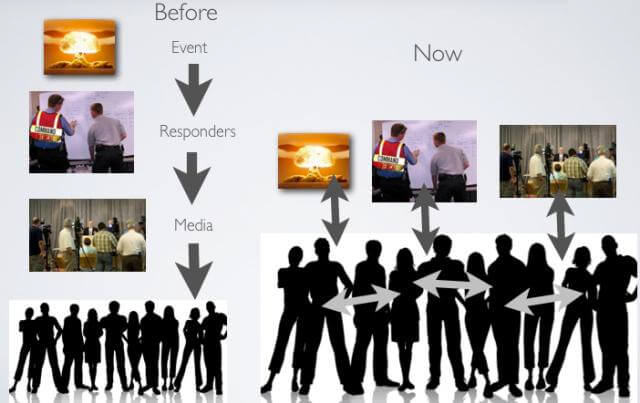The following is a guest post from Anne Marie Smith.
Let’s play a quick word association game. What is the first word or feeling that comes to mind for each of these companies?
- Fannie Mae
- Enron
- Disney
- Starbucks
If you’re like most people, your attitude about the first two is the polar opposite from your attitude about the last two.
Company culture is the feeling or “vibe” that people—your employees, shareholders, vendors, customers, and potential customers—have when they think about or interact with your organization. Your company’s culture starts with you, the CEO or owner of the business. Initially, you determine and communicate (or not) the culture of your company. Left un-nurtured to develop on its own, culture can become a living, breathing organism that can breed the warm fuzzies, apathy, negativity, or even downright spite.
So what does your company culture have to do with social media? Although the culture starts with you, your people and your customers are its main communication conduit. Your managers communicate the culture to their staffs, who then communicate it to your customers, who then communicate it to the rest of the world via Facebook, Linkedin, Twitter, Yelp, blogs, chat rooms, and the thousands of other social networking sites of today (and tomorrow). Social media is the cocktail party of yesteryear. Sharing opinions and experiences with other people is now the norm, so your culture cannot run and it cannot hide.
What’s more, the people that are the most vocal and who are apt to share their experiences with friends, family, and the universe will be:
- Your very satisfied fans (10 percent of your customers)
- Your extremely unsatisfied and angry mortal enemies (another 10 percent of your customers)
And guess what? Seventy-eight percent of consumers trust peer and online recommendations. Social media has become the Better Business Bureau on steroids.
Consumers that have had a bad shopping experience are likely to inform at least nine other people about it via word of mouth. Multiply that by the internet factor and the results can be astounding. “If you make customers unhappy in the physical world, they might each tell six friends. If you make customers unhappy on the Internet, they can each tell 6,000 friends,” says Jeff Bezos, CEO of Amazon.com.
Take the example of a musician named Dave Carroll and United Airlines. The musician’s guitar was damaged by the airline’s baggage handlers. He spent nine months trying to get United to pay the $1,200 it cost to repair the guitar. They refused. So Carroll wrote a song about it called “United Breaks Guitars” and posted it on YouTube. The video went viral and, within four days, was viewed over 1.5 million times. Traditional media picked up the story, so whoever hadn’t heard about it on the internet learned about it on the national news. Carroll himself was interviewed by Today, CNN, Jimmy Kimmel, and scores of other TV shows around the world. United attempted to prop up what was left of its tattered reputation by donating $3,000 to the Thelonious Monk Institute of Jazz. Too little, too late.
The takeaway? Here’s the formula you, your managers, and your employees need to live by:
Culture + Perception = Reputation
If your culture doesn’t include and model “the ultimate customer buying experience” or you don’t have a “Customer is Everything” value that your organization lives and breathes, your customer-facing employees may do or say something that will be announced to the digital world the next day and pounced on like vultures on road kill.
The upshot is you need to create a “Reputation Management” strategy that involves listening to your customers, thinking about consequences before acting, engaging your customers in conversation about what kind of buying experience they want, and measuring customer satisfaction.
——————
For more resources, see our Library topic Nonprofit Capacity Building.
—————————————————————————
Anne Marie Smith is President of 60 Minute Strategic Plan (www.60minutestrategicplan.com), developer of a web-based strategic planning tool. Anne Marie has over 25 years experience as a successful consultant, manager, and business owner. Before joining 60 Minute Strategic Plan, Anne Marie was co-founder and President of a high-growth business communications company that was on the Inc magazine 500 Fastest-Growing Privately-Held Company list for two years. A dynamic speaker and instructor, Anne Marie’s passion is helping other business owners achieve and excel. Anne Marie holds a Bachelor of Arts in Communications. She is co-author of 60 Minute Strategic Plan, a top-ten selling book on strategic planning on Amazon.com.











